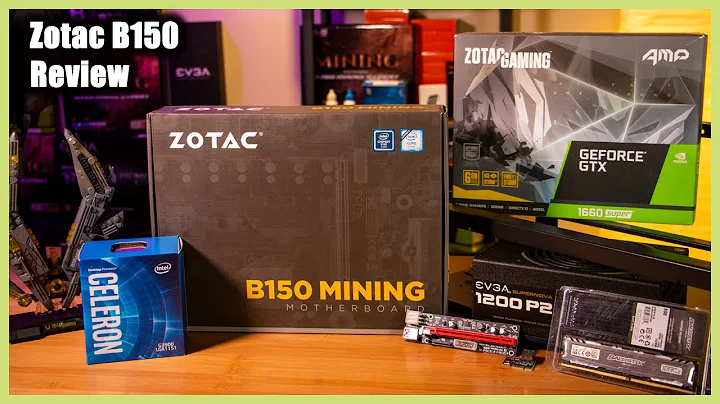The Ultimate Battle: Sapphire NITRO R9 390 VS. EVGA GTX 970 FTW
Table of Contents
- Introduction
- The Core 500 Toaster
- The Hype Around New GPUs
- The Battle: EVGA GTX 970 vs Sapphire Nitro R9 390
- Specifications and Features
- Design and Build Quality
- Cooling Performance
- Acoustics and Noise Levels
- Benchmark Results
- Gaming Performance
- Conclusion
- Resources
The Battle: EVGA GTX 970 vs Sapphire Nitro R9 390
In the world of graphics cards, EVGA and Sapphire are well-known brands that have produced some impressive models over the years. Today, we will be comparing two of their popular offerings, the EVGA GTX 970 For the Win Edition and the Sapphire Nitro R9 390. These cards are considered to be neck-and-neck when it comes to price and performance, making this battle an intriguing one for gamers and enthusiasts. Let's dive in and see how these GPUs stack up against each other.
Specifications and Features
The EVGA GTX 970 For the Win Edition features the brand's ACX 2.0 cooler and measures 9.5 inches long. On the other HAND, the Sapphire Nitro R9 390 Sports the heavyweight Tri-X cooler and weighs in at just over 12 inches long, making it the larger of the two. In terms of memory advantage, the R9 390 packs double the memory with a higher bus width and frame buffer. However, the GTX 970 is the more power-efficient contender, boasting a lower TDP and wattage power supply requirement.
Design and Build Quality
Both the GTX 970 and the R9 390 exhibit rock-solid build quality. Sapphire's Nitro variant comes with a larger enclosure and an included backplate, adding rigidity and heft to the card. The EVGA GTX 970, although slightly smaller in size, doesn't disappoint either in terms of build quality. Both cards feature their unique assembly of heat sinks, heat pipes, and fans to ensure optimal thermal performance.
Cooling Performance
When it comes to cooling performance, both GPUs performed admirably during load testing. Both the GTX 970 and the R9 390 recorded a maximum temperature of 74 degrees Celsius, indicating efficient heat dissipation. However, there is a noticeable difference in terms of acoustics. The EVGA GTX 970 exhibited a higher-pitched and slightly louder coil whine compared to the Nitro R9 390. The latter, while having louder fans, didn't have as distinct a coil whine sound.
Benchmark Results
Running benchmark tests on both cards, it becomes evident that they perform neck-and-neck in most scenarios. In 3DMark Fire Strike Extreme, the GTX 970 takes a narrow lead, indicating a promising battle ahead. Both cards excel in different gaming environments. At 1080p, the GTX 970 tends to be the faster GPU, while the R9 390 starts to gain an edge at 4K resolutions, thanks to its larger frame buffer. However, it's worth noting that a single R9 390 might struggle to drive most AAA titles comfortably at 4K.
Gaming Performance
To evaluate gaming performance, we tested both GPUs in popular titles such as GTA 5, Hitman Absolution, and Crysis 3. At 1080p, the GTX 970 generally delivered higher average frame rates, but the R9 390 outperformed it in minimum frame rates at both 1080p and 4K. The Nitro consistently outshined its competitor at 4K due to its superior memory and bandwidth.
Conclusion
In conclusion, both the EVGA GTX 970 For the Win Edition and the Sapphire Nitro R9 390 are solid performers in the graphics card market. At 1080p, the GTX 970 offers slightly better frame rates, while the R9 390 shines at 4K resolutions. Considering the increasing affordability of high refresh rate monitors and the demand for gaming at higher resolutions, the R9 390's larger frame buffer becomes a compelling advantage. However, the GTX 970's power efficiency and smaller form factor make it a better choice for compact builds.
Considering the performance similarities and the potential price difference between these two models, the showdown crown goes to Sapphire's Nitro R9 390. Overall, it offers a more well-rounded option for gamers looking to strike a balance between performance, affordability, and future-proofing.
Highlights
- The EVGA GTX 970 For the Win Edition and the Sapphire Nitro R9 390 are closely matched in price and performance.
- The GTX 970 is more power-efficient, while the R9 390 has a larger frame buffer.
- Both cards exhibit solid build quality, with the Nitro R9 390 boasting a larger enclosure and backplate.
- Cooling performance is excellent, with both GPUs reaching a maximum temperature of 74 degrees Celsius during load testing.
- Gaming performance varies, with the GTX 970 excelling at 1080p and the R9 390 gaining an edge at higher resolutions.
FAQ
Q: Which GPU is better for gaming, the EVGA GTX 970 or the Sapphire Nitro R9 390?
A: The ideal choice depends on the desired gaming resolution. The GTX 970 performs better at 1080p, while the R9 390 shines at 4K resolutions.
Q: Are both cards suitable for compact builds?
A: The GTX 970's smaller form factor makes it more compatible with compact builds, while the R9 390's larger size may pose clearance issues.
Q: Do these cards require additional power connectors?
A: Yes, the GTX 970 requires a pair of 8-pin and 6-pin PCI connectors, while the R9 390 requires a pair of 8-pin connectors.
Q: Is coil whine an issue with these GPUs?
A: Both cards exhibit some degree of coil whine, with the GTX 970 having a higher-pitched sound compared to the Nitro R9 390.
Q: Can the R9 390 comfortably handle AAA titles at 4K?
A: While the R9 390 performs admirably at 4K, a single card may struggle to deliver consistent frame rates in demanding AAA titles.
 WHY YOU SHOULD CHOOSE TOOLIFY
WHY YOU SHOULD CHOOSE TOOLIFY

























